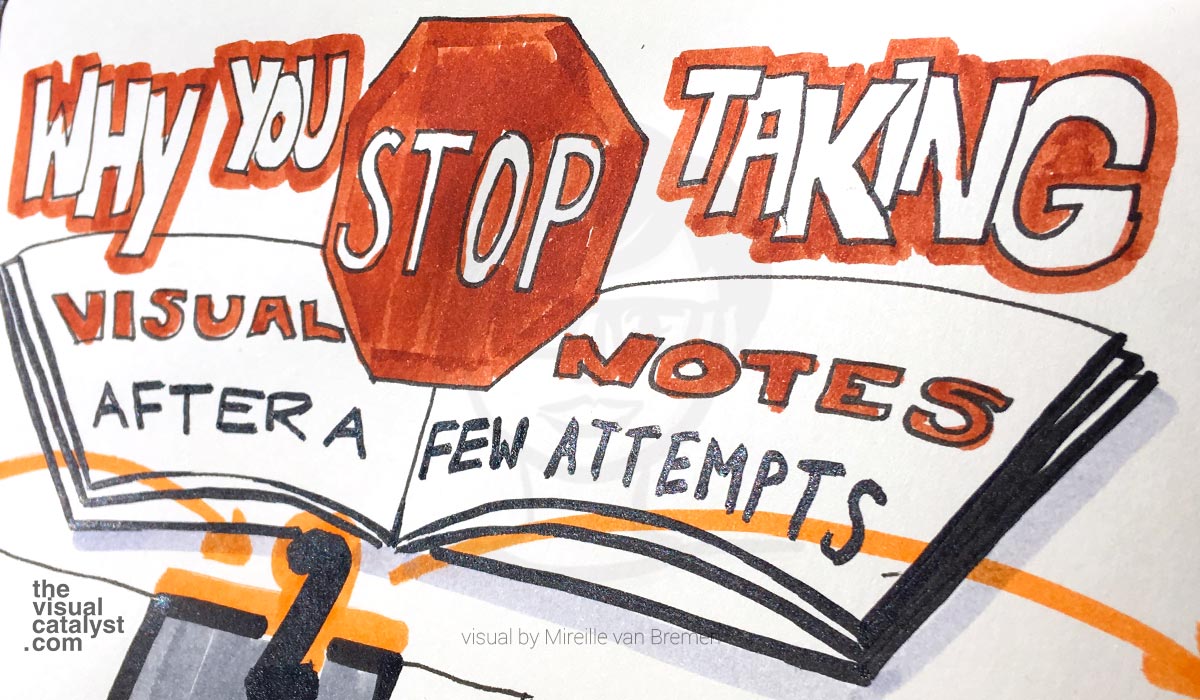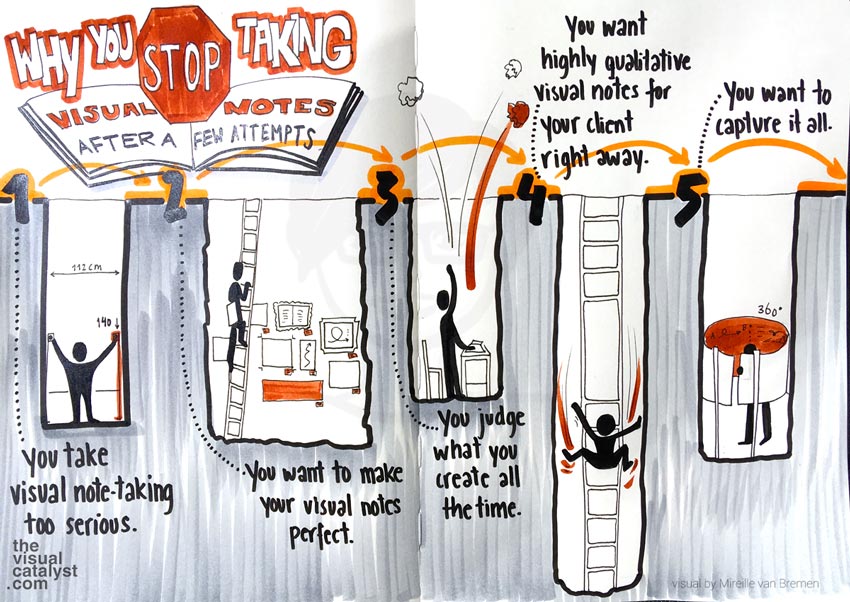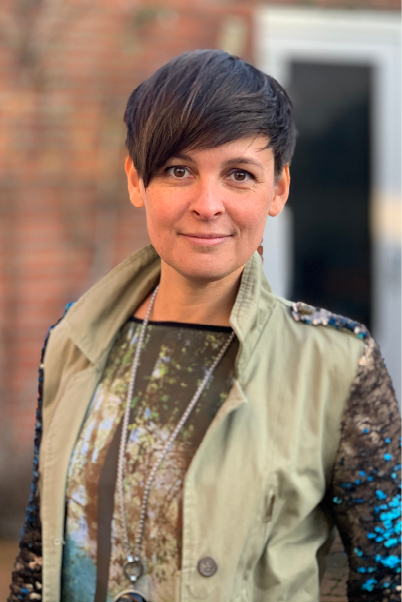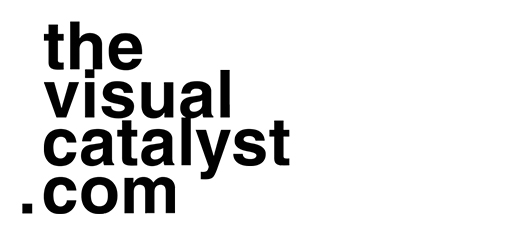
‘It’s so hard to capture the whole conversation in my visual notes.’
‘It is. So why do you try to capture everything then?’ I ask in return.
‘Because I don’t want to miss anything important.’
Wanting to capture the capture the whole conversation and not making choices about what to capture and what not, is one of the pitfalls you might fall into when you start making visual note taking a practice during coaching sessions or actually any conversation.
Did you give taking visual notes a try?
Have you noticed how your brain is talking quite loud to you while you made your first attempts? It’s quite likely you have fallen in one or more of the pitfalls that appear when you want to make visual note-taking a practice.
Perhaps you even already stopped taking visual notes because of it. Let’s turn the page and start a new. Knowing which pitfalls will come on your way, you can now make progress, because you know when to pass.
Know the pitfalls before you fall into them so you succeed in making visual note-taking a practice.

The 5 pitfalls that stop you from taking visual notes after a few attempts
PITFALL 1 – YOU TAKE VISUAL NOTE-TAKING TOO SERIOUS
PITFALL 2 – YOU WANT TO MAKE YOUR VISUAL NOTES PERFECT
PITFALL 3 – YOU JUDGE WHAT YOU CREATE ALL THE TIME
PITFALL 4 – YOU WANT HIGHLY QUALITATIVE VISUAL NOTES FOR YOUR CLIENT RIGHT AWAY
PITFALL 5 – YOU WANT TO CAPTURE IT ALL
MAIN INSIGHTS
- 1 > You take visual note-taking too serious
- 2 > You want to make your visual notes perfect
- 3 > You constantly judge what you create
- 4 > You immediately want highly qualitative visual notes for your client
- 5 > You want to capture it all
Do you learn because you share knowledge with others and (want to) use digital presentations?
After this free program, the response of your audience on your webinar, meeting, workshop, lecture, training (video’s), won’t be the same!

My name is MIREILLE VAN BREMEN
I believe that with empathy, clarity and transparency in our communication, we experience and reach more understanding, connection, inclusion, participation, leadership, creativity and trust in our relationships, communities and society.
My clients hire me to design infographics & visual summaries, illustrations and visual tools.
My participants join the online and live communication programs in my Online Training Platform
My programs help to increase impact by communicating both empathically and visually.

